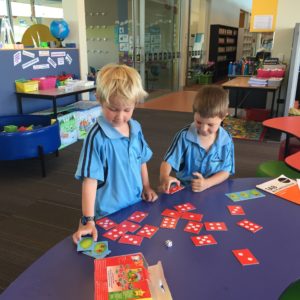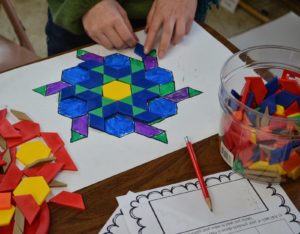Making Maths Fun! Ideas for over 2's
You will be amazed that what you are doing every day with young children is already laying strong foundations for mathematics, like algebra, statistics, measurement and geometry!
 When we are aware of these important foundations and we make this basic learning fun, we are developing the mathematicians of tomorrow – today!
When we are aware of these important foundations and we make this basic learning fun, we are developing the mathematicians of tomorrow – today!
Here are some ideas to make maths fun!
Ideas for Statistics
- Children are learning to use statistics through collecting everyday objects and sorting them into categories.
- It is important here so count the number of objects in each category, in order to compare them.
- The statistics aspect of this sorting activity kicks in when children display and discuss these results.
- Display ideas could include Venn Diagrams using overlapping hula hoops or graphs, such as a pictograph or bar graphs.
- Discussion questions could include: What was the criteria used to classify the objects? Which category has the most objects, which category has the least objects and if any have the same number of objects.
Ideas for Algebra
- Children are beginning to learn early algebraic concepts through copying and repeating a pattern.
- Threading and peg board activities are great ways to encourage children to copy and repeat a pattern – red, blue, green, red, blue, green.
- It is important that children can create their own pattern as well as copy and continue a pattern started by someone else.
- Getting children to verbalize what makes up their pattern or the pattern they are repeating is essential here too.
Ideas for Measurement: Length
- Children are learning to use measurement by ordering and comparing lengths.
- Children at this age can begin to measure using non-standard units.
- Everyday examples of this could be finding out how many footsteps to the sandpit or how many cars fit along the table top.
- The ability to count becomes important as children establish how many of their non-standard units it takes to measure their object.
- Comparisons are then made using those numbers, for example; it takes more footsteps to get to the sandpit than to get to the slide
Ideas for Geometry: Shapes
- Children are learning to recognize and name simple shapes, such as square, circle, triangle, rectangle/oblong
- Children learn to look at shapes and begin to discuss their attributes
- Children can classify shapes using these attributes, such as shapes with 4 sides, shapes that have corners or no corners
- Create a shape hunt and get children to find shapes in everyday objects around the centre

Ideas for Geometry: Spatial Awareness
- Children are learning to follow instructions relating to position and movement
- Giving directions for children to follow at mat time and outdoor play will help them to develop this understanding
- There are many books, rhymes and magnetic board resources that have a focus on spatial awareness that you can include in your programme
Julie Whitcombe and her company Thinking Caps for Kids runs professional development courses across New Zealand. She has many years experience as a Numeracy project facilitator for the Ministry of Education and her training courses currently have a strong emphasis on maths.
Julie’s courses include lots of practical ideas to take back to use in your centers straight away. Check out Thinking Caps for Kids for more details



